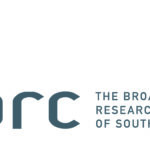Privacy-first advertising: How server-side tracking changes the game
 By Erin Deetlefs, Digital Campaign Manager at new-age solutions and systems integrator, +OneX
By Erin Deetlefs, Digital Campaign Manager at new-age solutions and systems integrator, +OneX
It has been a long time coming, but 2024 is proving to be a decisive year for third-party cookies. Google announced as far back as 2020 that it intended to phase out third-party cookies in its Chrome browser, but it has postponed the move several times. But this year, things are moving fast with Google intending to get rid of all third-party cookies by the end of 2024.
Within the first quarter, Chrome phased out 1% of third-party cookies globally and progress will accelerate throughout the year. This follows the introduction of new features in the Mozilla Firefox and Apple Safari web browsers to prevent cross-site tracking with the aim of promoting privacy friendly practices. With Google Chrome holding more than 75% of browser market share in South Africa, it has thus become urgent for marketers to rethink many of their old tactics.
Nearly five years since the industry started talking about the demise of the third-party cookie, it remains a mainstay of most brands’ digital advertising efforts. Third-party cookies allow programmatic platforms and their advertisers to track visitors’ website activities from one site to another. This tracking data enables advertisers to target users with ads based on their online behaviour and inferred interests.
Some companies have started to prepare for the sunset of third-party cookies by focusing on first-party data, or the data they collect about customers (with the user’s consent) on their own digital platforms such as apps and websites. One of the most powerful ways that advertisers can close the gap and make effective use of first-party data is through server-side tracking.
Flipping the script with server-side tracking
In the cookie world, we collect user data via a small file on their web browser, or on the ‘client’ side. With server-side tracking, data about how the user interacts with the website or app is instead captured on the cloud server. This data might include page views, button clicks, or purchases. Tools such as Google Tag Manager (GTM) enable brands on to manage tags, triggers, and variables on a server rather than within the web browser.
This data can be processed, stored, enriched and combined with first-party data on the server side. The server can use an API (application programming interface) to format the data and send it securely to destinations such as data vendors, data collection partners or analytics platforms. At this point, the data can be used for purposes such as targeted advertising and tracking paid media placements.
The advantages of this approach are numerous. Because tracking takes place on the server rather than the user’s device, ad blockers and privacy settings won’t disrupt tracking efforts. This enables brands to future-proof tracking for the imminent cookieless world. Advertisers also benefit from more accurate data, enabling more accurate attribution of credit to campaigns for conversions.
More accurate, but also more privacy friendly
Another benefit is that advertisers have more precise data for better and more accurate targeting, helping them reach the right people with the right message. Server-side tracking enables more accurate cross-domain tracking by consolidating data collection on the server-side, which can be challenging with client-side tracking methods like cookies.
Importantly, more accurate targeting and attribution is achieved in a manner that is more privacy friendly. Data is anonymised on the server before it is distributed via the API and the advertiser has full control over which data it shares. This respects user privacy, while still giving the advertiser valuable insights. This makes it easier to comply with privacy regulations and maintain user trust.
Getting started with server-side tracking
In addition to its many advantages, server-side tracking also has some drawbacks. In some instances, the data collected may not be as rich or as granular as client-side tracking. It’s also more complicated to track users across different platforms without cookies or device fingerprints. In practice, we can thus expect brands to continue to use first-party cookies for some purposes, in addition to server-side tracking.
Another drawback is that server-side tracking can be more complex to set up and maintain. Most advertisers will need to seek an agency with deep technical skills in APIs and cloud platforms to support them. Those that make the investment will be richly rewarded. Server-side tracking is about to change the online advertising landscape as advertisers get set for a world without third-party cookies.
- The BRC announces changes to the board and updates for 2025 - 17th December 2024
- Top 50 DSTV TV programmes – October 2024 - 12th November 2024
- Top 50 FTA TV programmes – October 2024 - 12th November 2024





